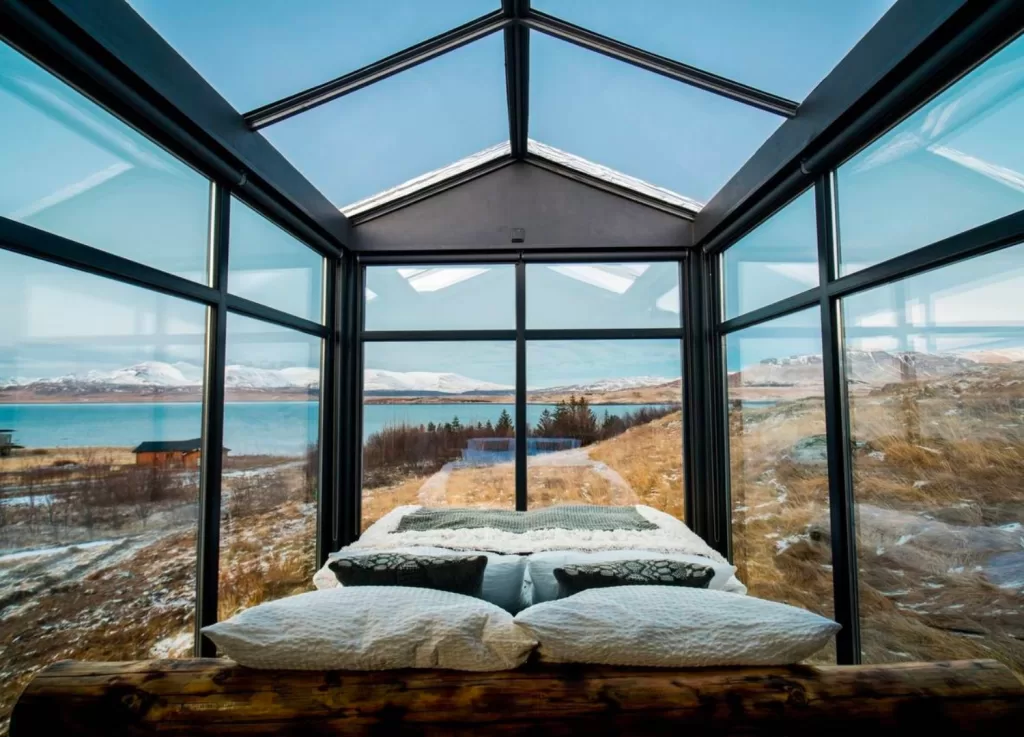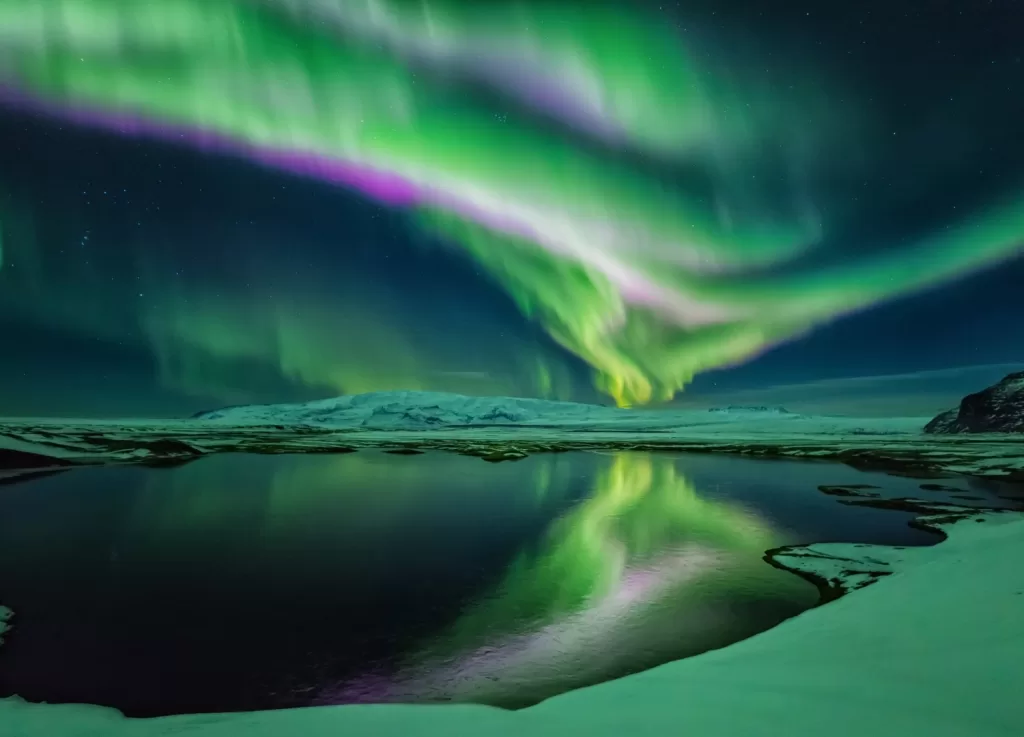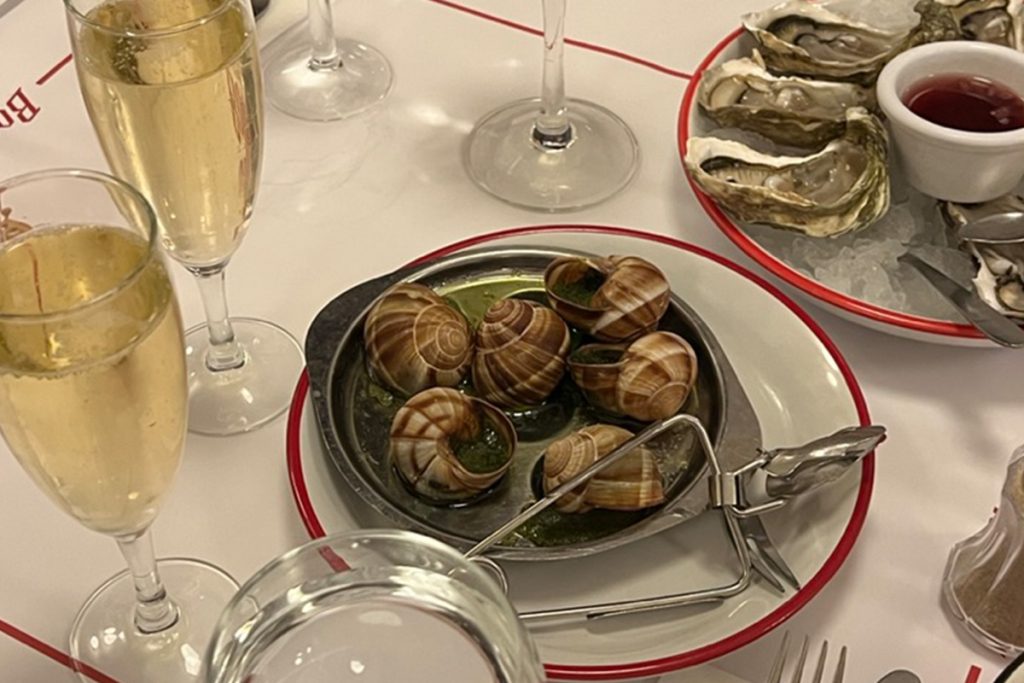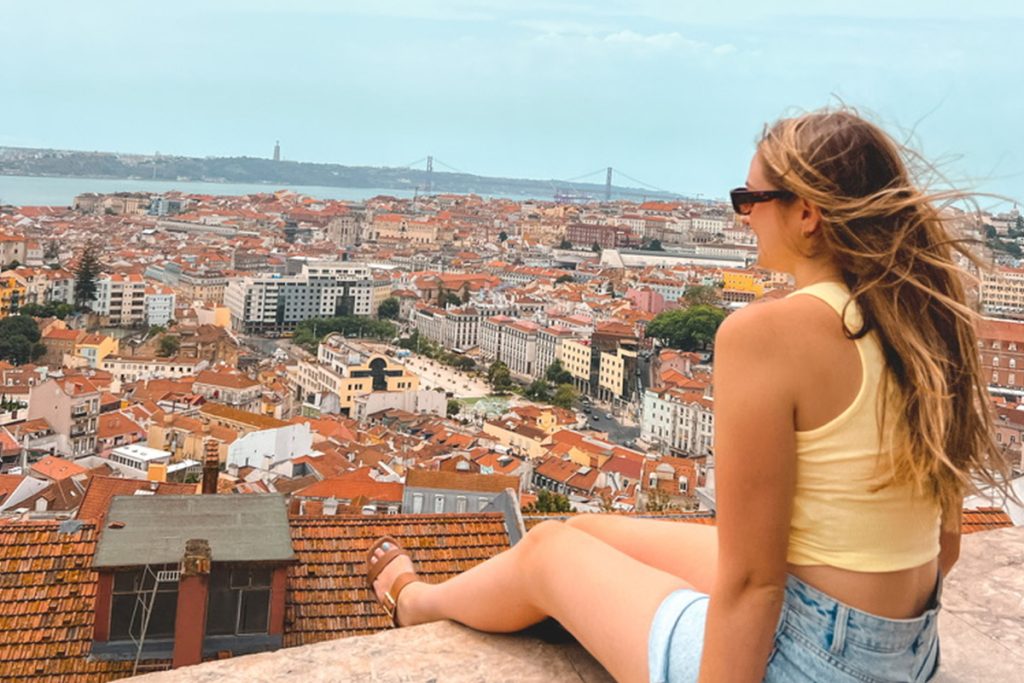As the winter months descend upon the picturesque country of Iceland, a magical phenomenon lights up the night sky. The northern lights, also known as the Aurora Borealis, dance across the horizon in a spectacular display of colours. January is one of the best times to witness this natural wonder, making it the perfect time to plan a trip to Iceland. Get ready to experience the stunning Northern Lights in Iceland during January, as I share some top tips and recommendations for exploring this magical natural phenomenon. So wrap up warm and prepare for an unforgettable winter adventure.
Embracing Iceland’s Icy Charm in January

Visiting Iceland in January is an extraordinary experience that allows you to immerse yourself in the country’s icy charm. With its snow-covered landscapes and frosty temperatures, Iceland transforms into a winter wonderland during this time of year. Whether you’re an adventure enthusiast or simply seeking a unique holiday destination, Iceland in January has something for everyone.
One of the best things about visiting Iceland in January is the opportunity to witness some of its most iconic natural attractions. It’s also the best time to visit the Golden Circle, a popular tourist route. This scenic route takes you to some of Iceland’s most famous sights, including the majestic Gullfoss waterfall and the geothermal wonderland of Geysir. Seeing these landmarks covered in a blanket of snow adds an extra layer of beauty to their already breathtaking allure.
Another highlight of exploring Iceland in January is the chance to visit its stunning ice caves. These ethereal formations are a result of melting glaciers and are only accessible during the winter season. Step into these ice caves and be mesmerised by their shimmering blue walls, creating a magical atmosphere like no other. It’s an experience that will leave you in awe of nature’s beauty.
Iceland is also renowned for its hot springs, and taking a dip in one during the winter season is a truly unforgettable experience. Picture yourself relaxing in a warm, steaming pool surrounded by snowy landscapes – it’s pure bliss. The Blue Lagoon is a world-famous hot spring that attracts visitors year-round, but in January, it offers a unique juxtaposition of the warm waters against the cold weather outside.
If you’re up for an adventure, consider embarking on a road trip along Iceland’s famous Ring Road. This scenic route takes you around the entire country, offering breathtaking views of the South Coast, glaciers, and volcanoes along the way. While road conditions can be challenging in January, with strong winds and icy patches, it’s a chance to truly embrace Iceland’s wild nature. Just make sure to drive cautiously and stay updated on the latest weather conditions.
Iceland in January is a time of contrasting landscapes and extreme weather conditions. It’s a season that tests your resilience but rewards you with incredible experiences. From witnessing the beauty of the Northern Lights to exploring ice caves and relaxing in hot tubs, there is no shortage of adventures to be had. So wrap up warm, embrace the cold, and get ready to be enchanted by Iceland’s icy charm.
Weather Expectations and Packing Recommendations

When it comes to weather expectations in Iceland in January, it’s important to be prepared for the elements. The average temperature during this time of year hovers around freezing point, ranging from -1°C to 3°C (30°F to 37°F). However, it’s important to note that Iceland’s weather can be quite unpredictable, so it’s always a good idea to pack layers and be ready for any surprises that Mother Nature might throw your way.
One essential item to have in your suitcase is a good quality, waterproof and windproof jacket. The strong winds in Iceland can make the temperature feel even colder, so having a reliable jacket will help you stay warm and protected against the elements. It’s also a good idea to pack thermal layers, such as long-sleeve base layers and thermal leggings, to keep you warm underneath your clothes.
In addition to warm clothing, don’t forget to pack sturdy waterproof boots with good grip. This is especially important if you plan on exploring Iceland’s famous ice caves. These stunning formations are created by melting glaciers and can only be accessed during the winter season. To fully enjoy this experience, it’s crucial to have proper footwear that will keep your feet warm, dry, and safe on the slippery ice.
Another item to consider packing is a hat, gloves, and scarf. These accessories will not only keep you warm, but they are also essential for protecting your extremities from frostbite. Iceland’s cold temperatures combined with strong winds can cause the wind chill to be quite harsh, so make sure to keep your head, hands, and neck well covered.
When it comes to packing for Iceland in January, it’s all about being prepared for the cold and changing weather conditions. Don’t forget to bring a backpack to carry your essentials, including a refillable water bottle, snacks, and a camera to capture the beautiful landscapes. And of course, make sure to pack your travel documents, including your passport, travel insurance, and any necessary medication.
Top Attractions and Sights Not To Miss

Iceland is a land of natural wonders, and in January, it’s truly a sight to behold. Here are some top attractions and sights that you definitely shouldn’t miss during your winter adventure in Iceland.
One of the most iconic attractions in Iceland is the Jokulsarlon Glacier Lagoon. This stunning glacier lake is filled with shimmering icebergs that have broken off from the nearby glacier. Take a boat tour to get up close and personal with these icy giants and witness the unique blue hues that the ice creates. It’s a surreal experience that will leave you in awe.
For those looking for a truly magical experience, visiting the ice caves is a must. These natural wonders are only accessible during the winter months when the glaciers melt and create intricate formations. Step inside these caves and be amazed by the vibrant blue colours and crystal-clear ice. It’s like stepping into a fairy tale.
Another must-visit attraction is the Skogafoss waterfall. This massive waterfall is one of Iceland’s most famous and is truly a sight to behold. In January, the waterfall freezes over, creating a stunning icy display. Climb the stairs to the top for a breathtaking view, and if you’re lucky, you might even spot a rainbow formed by the mist of the falls.
If you’re up for an adventure, head to the Snaefellsnes Peninsula. This picturesque region is often called “Iceland in miniature” due to its diverse landscapes. From lava fields and volcanic craters to stunning coastlines and charming fishing villages, Snaefellsnes has it all. Don’t miss the iconic Kirkjufell mountain, known for its unique shape and photogenic appeal.

Nature enthusiasts will also enjoy a visit to Thingvellir National Park. This UNESCO World Heritage site is not only known for its stunning landscapes but also its historical significance. It was here that the world’s first parliament, the Althing, was established in 930 AD. Take a walk between the tectonic plates and immerse yourself in Iceland’s rich history and natural beauty.

Last but certainly not least, no trip to Iceland is complete without a visit to the famous Blue Lagoon. This geothermal spa is renowned for its milky-blue waters and is the perfect place to relax and unwind. Take a dip in the warm waters, surrounded by snow-covered landscapes, and feel all your worries melt away.
With so many incredible attractions and sights to explore, you’re guaranteed to have a great time in Iceland in January. From ice caves to frozen waterfalls and geothermal spas, there’s something for everyone. So wrap up warm, embrace the cold, and get ready to be enchanted by the winter magic of Iceland.
Choosing The Right Accommodation For Your Icelandic Adventure

When planning your Icelandic adventure in January, choosing the right accommodation is essential for a comfortable and memorable trip. From cosy cabins to luxurious hotels, there are plenty of options to suit every budget and travel style.
If you’re looking to immerse yourself in Iceland’s natural beauty, staying in a remote countryside cottage or a traditional Icelandic farmhouse can provide a truly authentic experience. These accommodations offer a peaceful retreat, surrounded by stunning landscapes and the opportunity to witness the northern lights right outside your doorstep. Imagine staying in a charming wooden cabin, snuggled up by the fireplace after a day of exploring ice caves or chasing waterfalls.
For those seeking a more luxurious experience, Iceland also offers a range of boutique hotels and eco-lodges that combine comfort with sustainability. These accommodations often feature stylish designs inspired by Iceland’s natural elements, such as volcanic rocks and moss-covered roofs. With amenities like spa facilities, gourmet restaurants, and panoramic views of the surrounding mountains or coastline, you can indulge in the ultimate Icelandic getaway.
If you prefer the convenience of staying in a city, Reykjavik has a variety of accommodation options to choose from. From budget-friendly hostels to boutique hotels, there’s something for every traveller. Stay in the city centre to be close to restaurants, bars, and shops, or opt for a hotel by the waterfront to enjoy breathtaking views of the harbour. Reykjavik also offers easy access to tour operators and transportation, making it a great base for exploring the rest of the country.
When booking your accommodation, it’s important to consider the location and accessibility, especially if you’re planning to embark on day trips or excursions. Some accommodations offer package deals that include tours or transportation, which can be a convenient option if you prefer to have everything arranged for you.
Regardless of where you choose to stay, it’s recommended to book your accommodation in advance, especially during the peak season in January. With the increasing popularity of Iceland as a travel destination, availability can be limited, so it’s best to secure your spot early. Check out some fantastic options on Booking.com.
The Ultimate Experience: Chasing The Northern Lights

Now, let’s talk about the ultimate experience that awaits you in Iceland in January: chasing the mesmerising Northern Lights, also known as Aurora Borealis. There is something truly magical about witnessing this natural phenomenon firsthand. As the sun sets and darkness falls, the sky comes alive with dancing ribbons of green, purple, and pink lights. It’s like stepping into a dream.
To increase your chances of seeing the Northern Lights, it’s important to find the perfect location with minimal light pollution and clear skies. One of the best spots to witness this breathtaking display is the Jokulsarlon Glacier Lagoon. This stunning location offers a picturesque backdrop of icebergs and the open sky, providing the perfect conditions for a memorable experience. Imagine standing by the tranquil glacier lake, with the Northern Lights illuminating the surroundings – it’s an experience that will stay with you forever.
Another fantastic location to chase the Northern Lights is the Thingvellir National Park. This UNESCO World Heritage site not only offers beautiful landscapes but also dark and open spaces, perfect for stargazing and catching a glimpse of the auroras. Wander through the park’s trails, surrounded by mountains and geological wonders, and keep your eyes on the sky for the ethereal dance of Aurora Borealis.
If you’re up for an adventure, why not combine the Northern Lights with a visit to the ice caves? These natural formations, created by melting glaciers, are a sight to behold on their own. But when paired with the dancing lights of the auroras, it creates a truly enchanting experience. Step inside the ice caves, and let the mesmerising blue walls and glistening ice surround you. It’s like stepping into another world.
While there’s no guarantee that you will see the Northern Lights during your trip to Iceland in January, it’s a good time to hedge your bets and the anticipation and the chase itself are part of the adventure. Be patient and embrace the thrill of the unknown. Remember, nature is unpredictable, and the magic of the Northern Lights lies in their elusive nature.
To maximise your chances of witnessing the Northern Lights, consider joining a guided tour led by experienced local experts. These guides have in-depth knowledge of the best locations and weather conditions, increasing your chances of catching a glimpse of the dancing lights. They will also share fascinating insights and stories about the auroras, making the experience even more enriching.

So, wrap up warm, pack your camera, and get ready for a once-in-a-lifetime experience. Chasing the Northern Lights in Iceland in January is an adventure like no other. Whether you witness them from a glacier lagoon, a national park, or inside an ice cave, the Northern Lights will leave you in awe of nature’s beauty.
Helpful Tips for Travelling Around Iceland in Winter

As you embark on your winter adventure in Iceland, it’s important to be well-prepared for travelling around the country during this season. The winter months in Iceland can bring challenging weather conditions, icy roads, and limited daylight hours, so here are some helpful tips to ensure a smooth and safe journey.
First and foremost, it’s crucial to check the weather forecast and road conditions regularly. The Icelandic Road and Coastal Administration (IRCA) provides up-to-date information on road closures, weather warnings, and any other travel advisories. This will help you plan your itinerary accordingly and avoid any potential hazards.
Driving in Iceland during the winter requires extra caution and preparation. If you’re looking into hiring rental cars, make sure to rent a four-wheel drive vehicle with studded winter tyres, as these provide better traction on icy and snowy roads. It’s also a good idea to familiarise yourself with driving on slippery surfaces and be aware of how to handle skidding or sliding during the colder temperatures.
When it comes to navigation, a reliable GPS or navigation app is essential. Iceland’s landscapes can be remote and isolated, so having a reliable means of navigation will help you stay on track and find your way to your destinations. Be sure to download offline maps in case you encounter areas with no internet or mobile reception.
Another important tip is to fill up your fuel tank whenever possible. Petrol stations can be few and far between in certain parts of Iceland, so it’s best to keep your tank topped up to avoid running out of fuel. Additionally, consider packing some extra food and water in case of unexpected delays or road closures.
If you’re planning on visiting an ice cave, especially if it’s your first time, it’s highly recommended to join a guided tour. These bus tours are led by experienced local guides who are familiar with the area and can ensure your safety while exploring these natural wonders. They can also provide insights and knowledge about the ice caves, enhancing your overall experience.
It’s also worth noting that daylight hours are limited in Iceland during the winter. Sunrise can occur as late as 11:00 am and sunset as early as 3:00 pm, so plan your activities accordingly. Keep in mind that certain attractions may have restricted opening hours or may be closed during the winter months, so check ahead of time to avoid disappointment.
Lastly, make sure to dress appropriately for the weather. Layering is key to staying warm in the cold Icelandic winter weather, so wear thermal base layers, a good-quality waterproof and windproof jacket, thermal leggings, and warm socks. Don’t forget to pack a hat, gloves, and a scarf to protect yourself from the cold winds.
Travelling around Iceland in winter can be a unique and unforgettable experience, but it’s important to be prepared.



